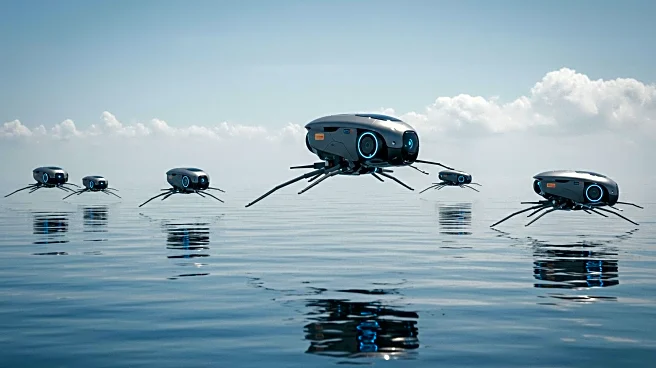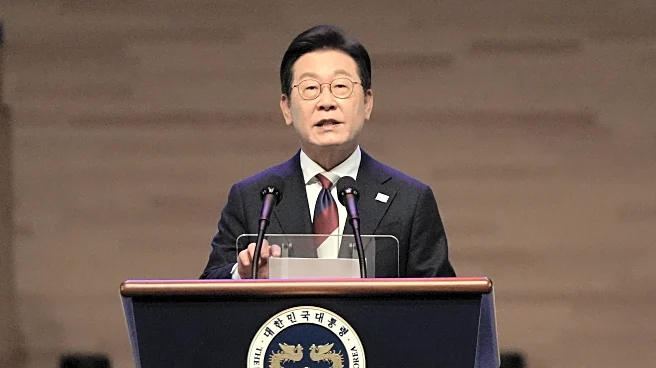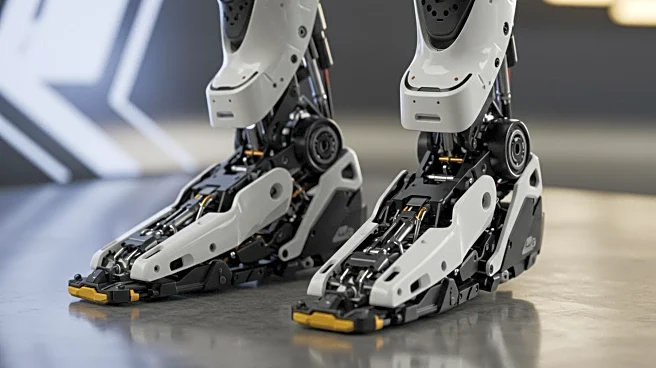What's Happening?
A team of researchers from the University of California, Berkeley, the Georgia Institute of Technology, and Ajou University in South Korea have developed an innovative insect-scale robot inspired by the Rhagovelia water strider. These water striders possess unique fan-like propellers that allow them to glide across fast-moving streams. The study, published in Science, reveals that these fans open and close passively, utilizing surface tension and elastic forces rather than muscle energy. This discovery led to the creation of a bioengineered robot with self-morphing fans that mimic the agile movements of the Rhagovelia bugs. The research highlights the potential of biological adaptations to enhance the locomotion and endurance of robots without additional energy costs.
Why It's Important?
The development of these mini robots has significant implications for the field of robotics, particularly in creating efficient, small-scale machines capable of navigating complex environments. By mimicking the natural adaptations of the Rhagovelia water strider, these robots can achieve enhanced thrust, braking, and maneuverability. This advancement could lead to breakthroughs in environmental monitoring systems, search-and-rescue operations, and other applications requiring dexterous movement across water surfaces. The interdisciplinary approach combining biology, physics, and engineering underscores the potential for nature-inspired designs to overcome limitations in conventional robotics.
What's Next?
Future research will likely focus on further refining the design and capabilities of these bioinspired robots. There is potential for exploring additional applications in various fields, such as environmental monitoring and disaster response. The integration of these robots into practical scenarios will require continued collaboration across scientific disciplines to optimize their performance and adaptability in real-world conditions.
Beyond the Headlines
The study not only advances robotic technology but also provides insights into the biomechanics of aquatic locomotion. Understanding the duality of flexibility and rigidity in the Rhagovelia's fan structure could inform the design of other bioinspired technologies. This research exemplifies how interdisciplinary collaboration can lead to innovative solutions that bridge the gap between natural and engineered systems.













